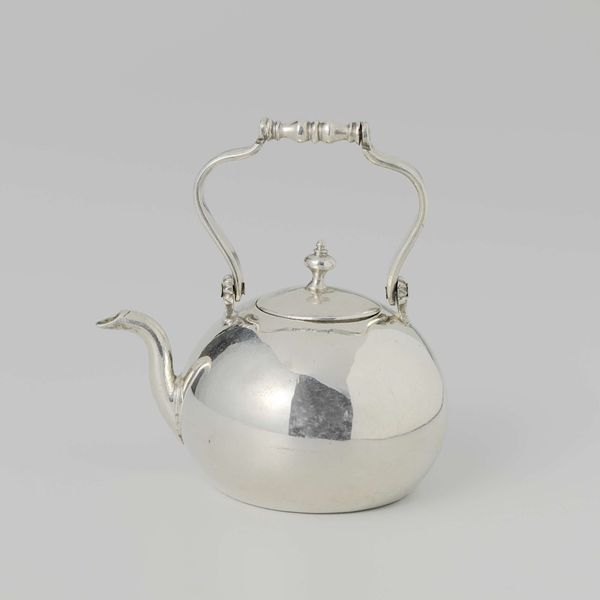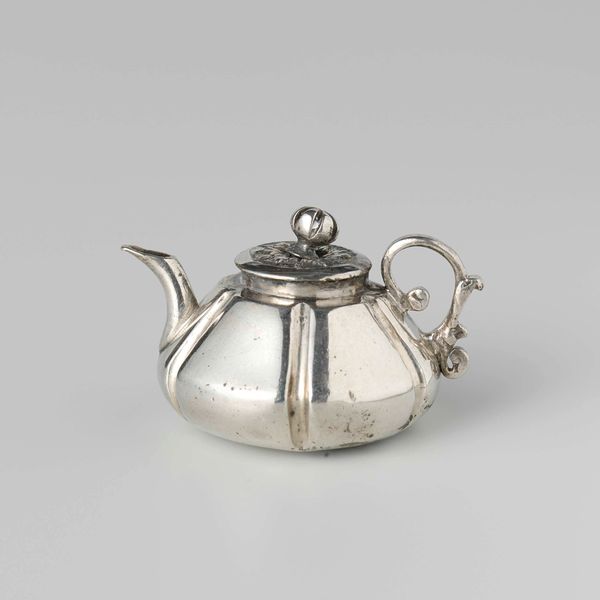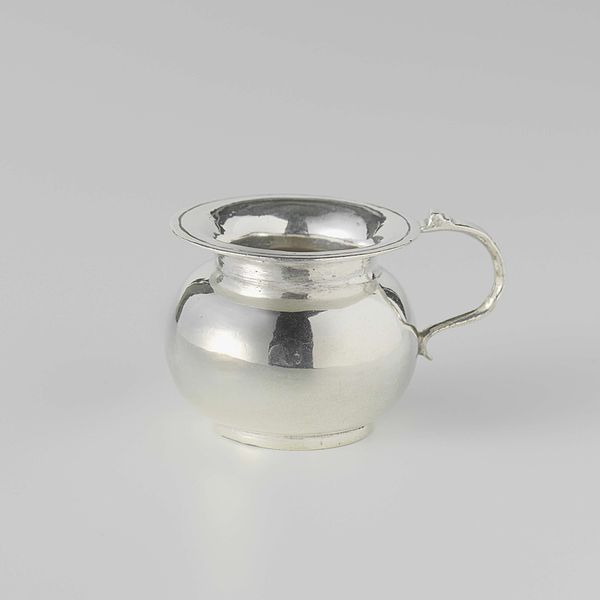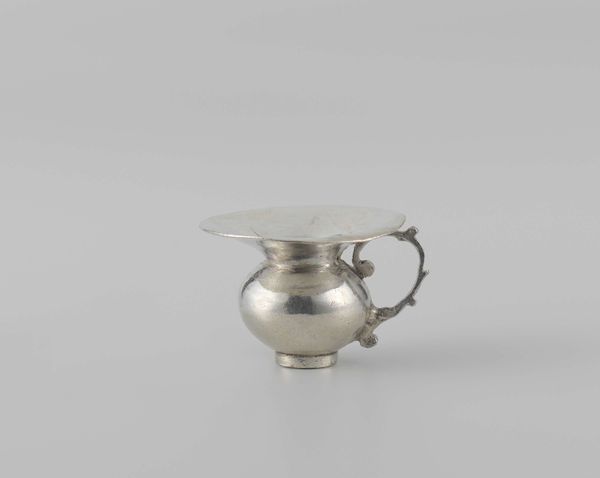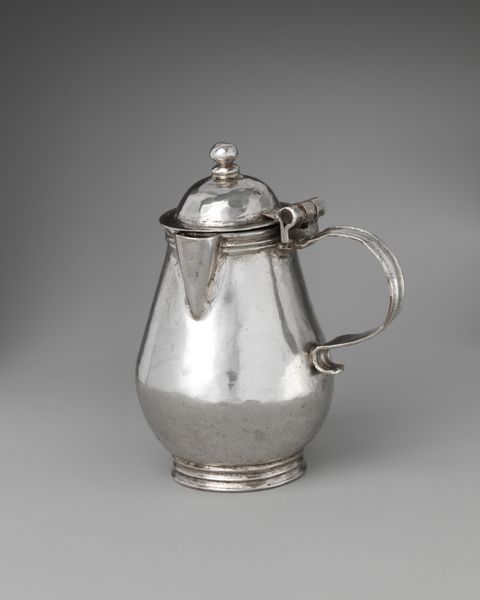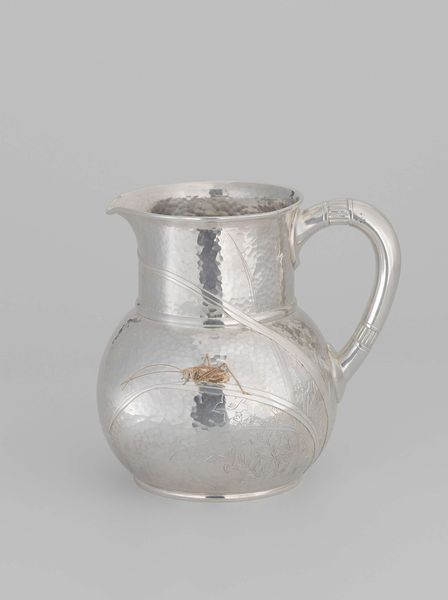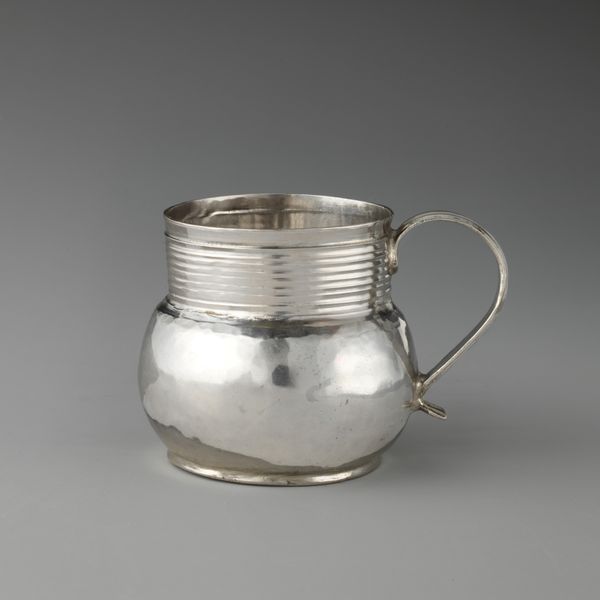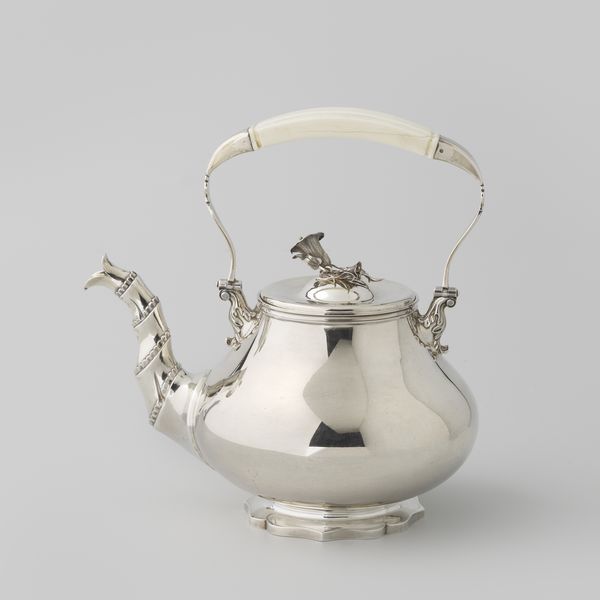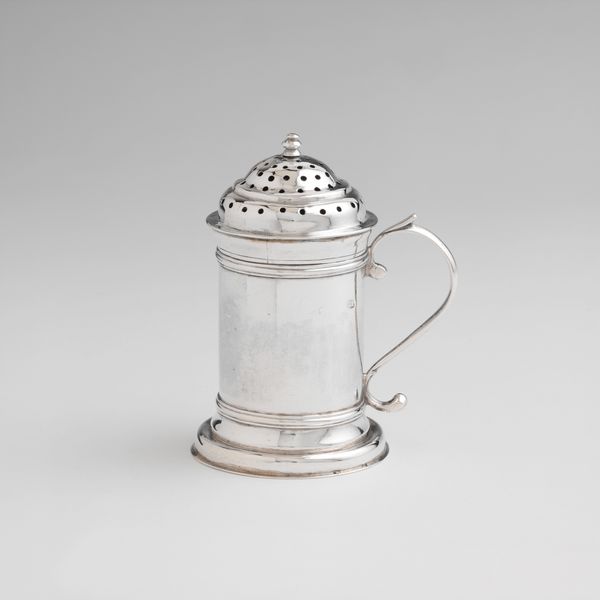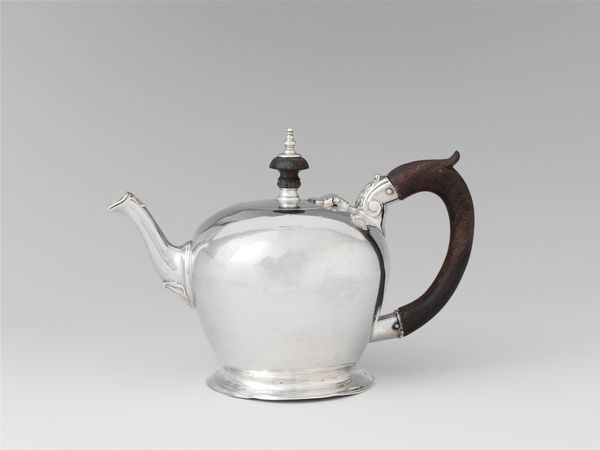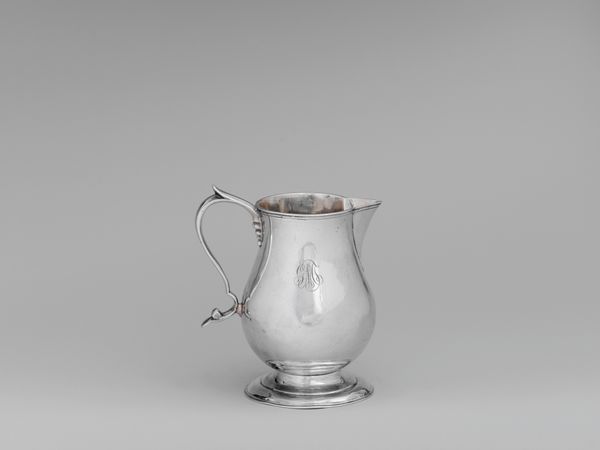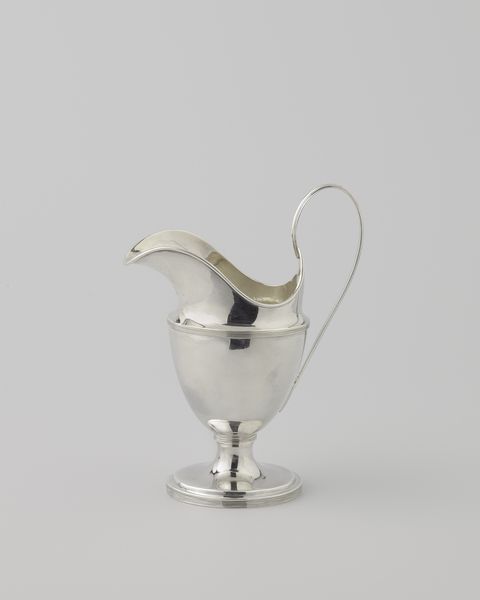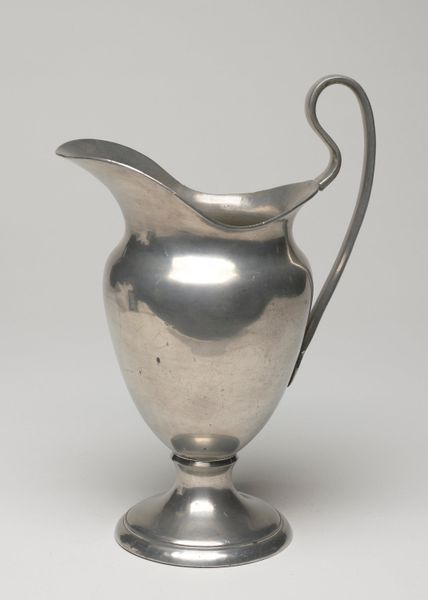
metal
#
metal
#
rococo
Dimensions: height 4.2 cm, diameter 4.2 cm
Copyright: Rijks Museum: Open Domain
Editor: So, here we have "Ketel," a metal teapot created in 1754 by Jan Borduur. It looks so delicate and petite! What’s fascinating to me is the reflection on its surface... How would you approach analyzing this? Curator: For me, this piece speaks volumes about the 18th-century obsession with refined commodities and social rituals. Think about the labor involved: from the mining of the metal to its transformation by a silversmith skilled enough to create these subtle curves. What does the object itself, the form of the kettle, reveal to you? Editor: I guess it suggests tea drinking was a ritualistic part of someone's day, a sign of status even? But also, shouldn’t the social context be relevant here as well? I read the Rococo style developed as an attempt to recreate natural forms and luxury, reflecting the leisure and opulence of aristocratic life, right? Curator: Absolutely! Rococo's embrace of flowing lines, delicate forms, and ornate details signals a shift in aristocratic life, focused more on intimacy and decorative objects. The "Ketel," isn't merely a functional item but a signifier of wealth and the culture of domesticity. Can you think of similar things happening in contemporary art production? Editor: Hmmm, like when artists today focus on everyday objects, calling our attention to manufacturing and commodity culture… I suppose it's interesting to trace those roots. Curator: Exactly. By considering how such an object was produced, used, and valued, we can better understand the social and economic fabric of its time – and even our own. This teapot then becomes more than a simple object, it's an archive of 18th-century society and its material conditions. Editor: Fascinating, it offers so much to consider beyond its obvious visual appeal! Thank you!
Comments
No comments
Be the first to comment and join the conversation on the ultimate creative platform.
